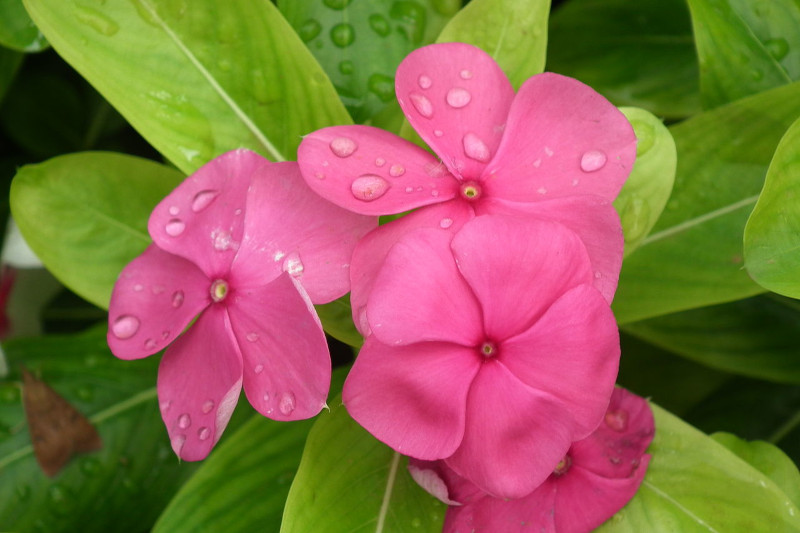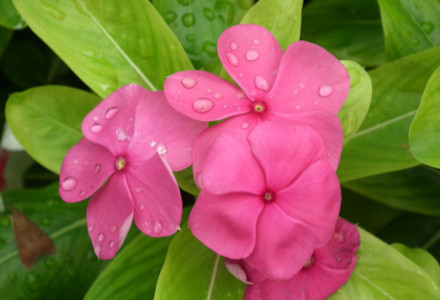
Photographer: Rameshng
CC License: https://bit.ly/3BNYGaJ
Rosy Periwinkle Facts
- Firstly, the Rosy Periwinkle has far more to offer than just beauty. It forms a beautiful plant with incredible botanical usefulness. This stunning species also holds the unfortunate distinction of presently being quite rare and endangered.
- Secondly, its truly majestic beauty has another side effect. That holds true due to the fact that the plant also understandably became quite popular as an ornamental plant. Despite its delicate appearance, this plant remains an extremely hardy species.
- The delicate marvel of Nature, quite unfortunately, also has an extremely limited endemic range. Within that range, however, the flora now faces the threat of loss of habitat due to the practice of slash and burn agriculture.
- Fortunately, though, it proved to be highly adaptable and became naturalized in numerous other parts of the world. Nevertheless, within that limited home range, it now finds itself facing the very real potential threat of extinction in the wild.
- That lamentable state holds true due to the fact that, like many other species, it now must deal with the ongoing effects of climate change. Despite this, the IUCN currently has no listing for the Rosy Periwinkle on its Red List of Threatened Species.
Related Articles
Nightshade Black Bat Flower Lotus Corniculatus
Rosy Periwinkle Physical Description
The beauty of the Rosy Periwinkle conceals a surprising character. That’s because the gorgeous variety of flora is also highly versatile in nature. This holds true due to the fact that the Angiosperm develops as either a herbaceous plant or an evergreen shrub.
It also grows either vertically or runs along the ground, allowing it to inhabit different areas. It also attains heights of as much as 3.1 ft (1 m). In addition, the flowers of this marvelous plant appear either white with a red center or a dark pink, making for a striking contrast.
Its leaves typically display a glossy green in color. These develop a thick leathery texture. The fruit of the Rosy Periwinkle develops as an elongated follicle. This feature also most often appears in pairs. The sap of this plant has the consistency of a thick, milky white latex.
- Kingdom: Plantae
- Phylum: Angiosperms
- Class: Eudicots
- Order: Gentianales
- Family: Apocynaceae
- Genus: Catharanthus
- Species: C. roseus
Photographer: giveawayboy
CC License: https://bit.ly/3fbKO0h
Rosy Periwinkle Distribution, Habitat, and Ecology
The incredibly lovely Rosy Periwinkle evolved as native to not only a limited region of the world, but a isolated one, as well. This flowering plant actually grows only on the island of Madagascar. This fabulous site itself remains an extremely unique location.
The beauty of the plant also conceals another surprise. It represents a veritable cornucopia of useful chemical compounds. In fact, some of the chemicals in the Rosy Periwinkle also have high toxicity, and ingestion of even a small amount can be fatal.
However, many of the other chemical compounds within the flower prove invaluable in saving lives. Thus, it proves itself to be highly useful. Some of the diseases treated by its compounds include a variety of cancers, diabetes, Hodgkin’s lymphoma, and even malaria.
Species Sharing Its Range
Check out our other articles on 7 Lesser-Known South American Mammals, Northern Bald Ibis, Wadi Rum, Hawaiian White Hibiscus, Whitemargin Stargazer, Marine Iguana

